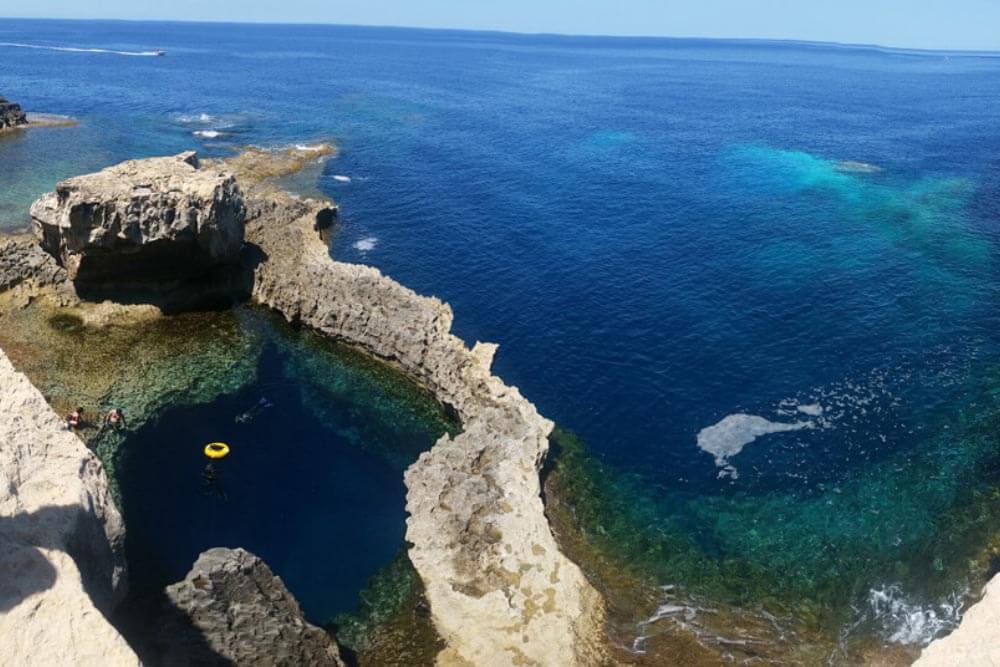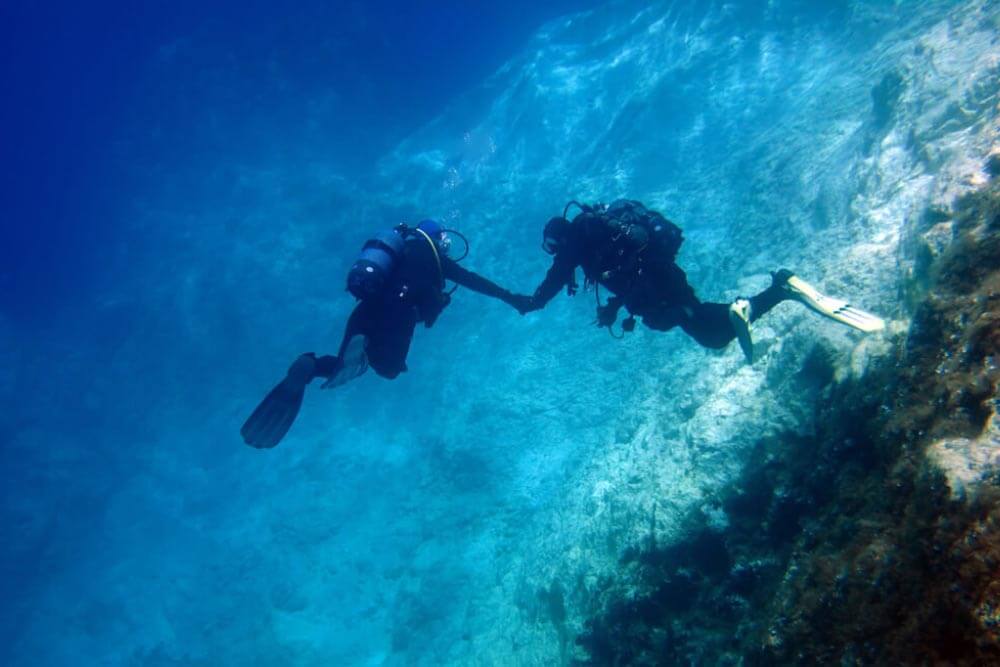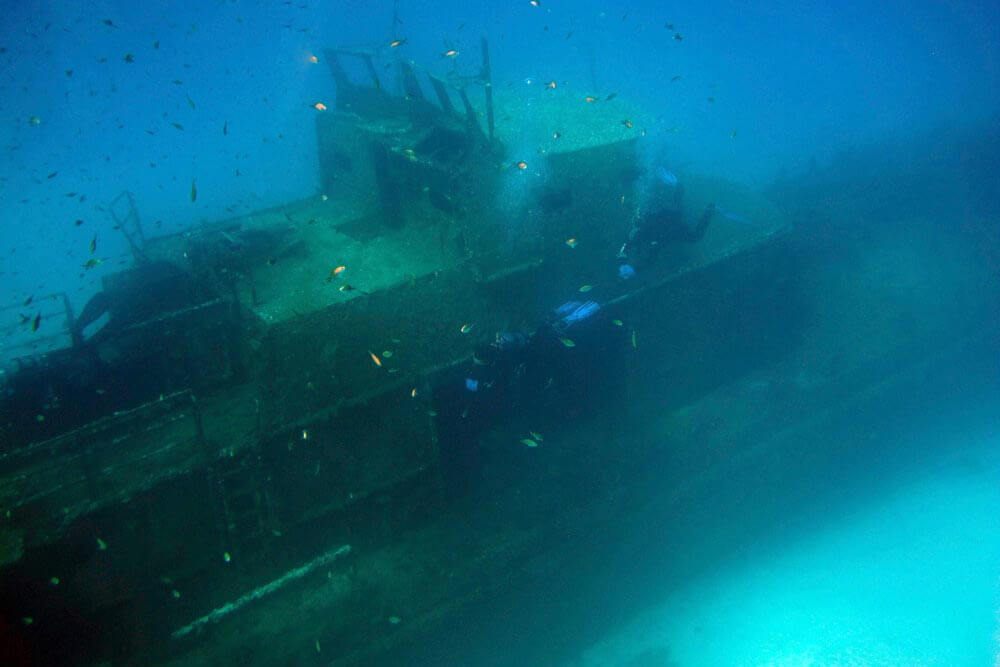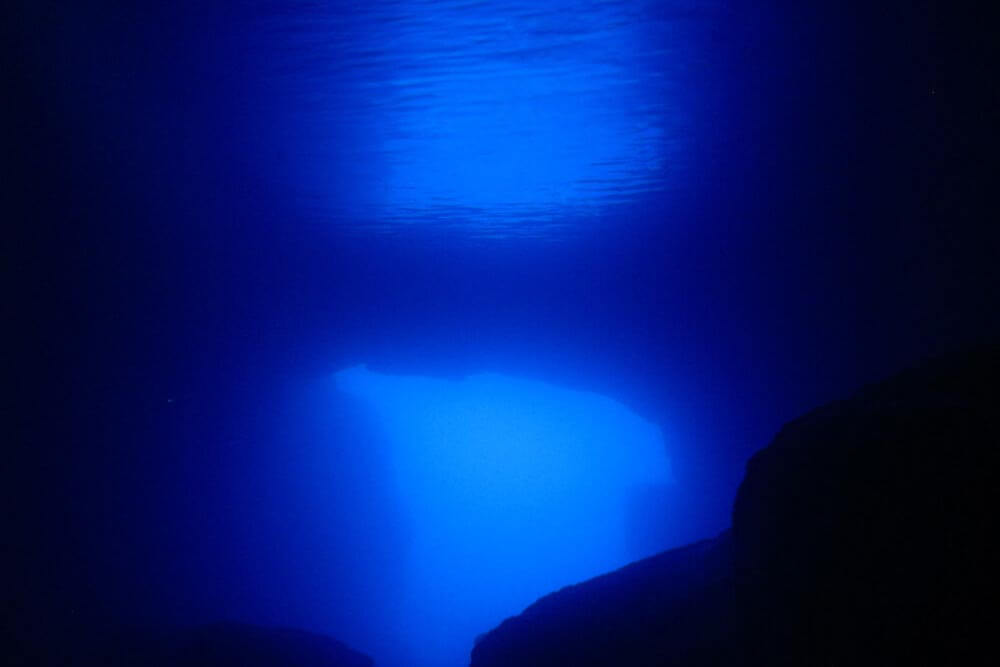
The first time I visited the island of Gozo as a scuba diver was in 2004, a change of scenery from the usual Red Sea haunts that were the mainstay of my life as a dive tourist.
A lot can change in 13 years. I became an instructor, and then a journalist; governments have risen and fallen, entire nations have changed hands, but Gozo, thankfully, remains just as I remembered it: relaxed, peaceful, beautiful both above and below the water, and as sunny as ever.
Perhaps there is a little more traffic on the main roads, new restaurants in Victoria with free wi-fi rather than the little internet café I visited to e-mail pictures to friends and, of course, the fact that one of the island’s most famous geological features – the Azure Window – is now underwater.
After a pleasant introductory dive at Xlendi with our guide Denis, of Atlantis Diving Gozo, it was to the Blue Hole and the famously fallen arch that we headed. Nothing much seemed to have changed here either – the car park was as busy as I remembered, full of divers sweating as they struggled in and out of their drysuits, picking their way across the sharp stones and large rocks that I also – rather less fondly – recalled.

Navigating across the ground to the Blue Hole is something of an adventure in itself. Although my 7mm semi-dry was probably a little less sweaty than the undergarments of the drysuit divers, transporting yourself across the rocks in the dry heat of the day requires no small amount of effort. Boots – the thicker the better – and open heeled fins are therefore essential. Divers with full-foot fins might as well sit back and enjoy an ice-cream because you’re not going to be jumping in unless the soles of your bare feet are thicker than horses’ hooves.
I had imagined that somebody would by now have installed some decking and poured some concrete to facilitate the entry but although it’s not the easiest of walks in full gear, I’m rather glad they haven’t. The Blue Hole is a special dive, and that would have taken something away from the character of the site.
Jumping (or flopping, more precisely) into the water and descending through the arch and its vivid blue light into the open sea was, at first, just as I remembered, but then it wasn’t. Where previously you could look up to the surface and see the majesty of the Azure Window as it loomed above you, now you can marvel at the sight of a collection of boulders the size of small houses, and a massive wall of white limestone that has not been previously exposed – to anything at all – for aeons.

As divers from the island had previously told me, the Blue Hole and the remains of the Azure Window is now actually a better dive site. There are a couple of additional, very easy, swim-throughs and the contrast of the freshly broken white rock against the Mediterranean blue is quite marvellous. There are already signs of underwater growth on the rock face, just a few months after the archway collapsed; so to see the sight at its best before it gets discoloured by algae will need a visit this year, as early as possible.
After a very agreeable and inexpensive lunch at a cafeteria on the shore of the Inland Sea, just a short walk from the Blue Hole, we dived the lovely tunnel out into the Med with its 80m of glowing blue light from the exit, and found the usual array of critters in the gloom. Octopus, lobsters and nudibranchs are quite easy to spot, but I don’t recall the amount of boat traffic through the tunnel being as much in 2004 as it is now. With the major attraction of seeing the Azure Window as you exit the tunnel now gone, it seems rather pointless, in a way.
Our congenial host for the evening at the restaurant of Ta’ Philip, with his impressive kitchen and even more impressive wine cellar – something of a tourist attraction in itself – perhaps contributed to some minor buoyancy wobbles the next day at the wreck of the P31, as we joked that shedding a kilo of lead to compensate for Mr Spiteri’s expansive menu might have been a good idea.

Although Malta and Gozo are surrounded by shipwrecks, many are inaccessible to recreational divers due to their depth, however, the P31, situated just off the island of Comino, is an excellent alternative, especially for beginner-level divers as the hull sits in only 18m of water. Doors and hatch covers were removed from the former patrol boat to prepare it for easy penetration prior to the sinking of the vessel as an artificial reef, and there are short swim-throughs that are well suited to a confident Open Water diver with an appropriate guide.
Heading off to the Comino Caves for the second dive, of which I have fond memories, I found myself not enjoying them as much as I had done 13 years ago, although others in the dive team were quite thrilled with the experience. I’m rather claustrophobic, and some of the passageways are rather small, but what is magical is the way the light plays through the openings of the caves, and for that alone it is worth the effort.
It is a theme common to diving around the Maltese islands. The impressive array of underwater geological structures, arches and caves combined with excellent visibility and the Mediterranean sunshine does make for some excellent lighting effects, and none more so than our final dive of the trip at Cathedral Cave.

I had never been to the Cathedral before, and so particularly enjoyed a dive of over 70 minutes, more than 30 of which we spent in the cave itself. The entrance is wide open and easily accessible, and there is a vast, cavernous chamber in which a diver can surface to find themselves floating in a sea of liquid blue.
The effect is spectacular and, alone in that cave as we were, rather stirring. It more than made up for the difficult entrance and exit, climbing a 3m ladder attached to the rock face, and kept the cold at bay just that little bit longer.
The water temperature is not at its warmest in May, with an average temperature of around 17℃, but my 7mm Beuchat suit and hood, and the 5+5mm farmer john / shorty / hood combos provided by Atlantis to the rest of the group staved off the cold long enough that we could enjoy the dives without too much shivering, although 72 minutes at the Cathedral made keeping my camera steady almost impossible.

After an excellent lunch on the terrace of Ta’ Rikardu in central Victoria, the capital of Gozo, we headed off to the wonderful Dreams of Horses Farm, where Vincent Muscat, the charismatic owner, rescues abused horses from around Europe for rehabilitation.
It may seem odd to find something so completely unrelated to diving in the pages of this magazine, but I felt his noble enterprise deserved a special mention, as the farm also offers children and adults with learning difficulties the opportunity to interact with the animals as a form of therapy. More regular equine-based activities are also available, and if your love of animals extends to those above the water as well as below, the farm is well worth a visit.
Retiring to our handsomely appointed shared accommodation to compare notes over a bottle (well, bottles!) of excellent Maltese wine, our happy little band of journalists all expressed extreme enjoyment at our all-too-short visit to this delightful island.
And since I bring it up, it is definitely worth mentioning that wine aficionados will love the local grape. Malta has a very well kept secret as it does not export the products of its vineyards but what they produce is very, very good.

We didn’t get much chance to explore Malta itself, but when I first booked my holiday back in 2004, I remember reading that Gozo is much less busy than Malta, and this definitely remains the case. Divers who prefer quiet evenings in local bars and restaurants over a busy nightlife will much prefer Gozo, although it’s easy enough to escape the parties on Malta and retire to more tranquil locations.
Overall, I was very pleased to find that diving in Gozo has not changed a great deal in the last 13 years, bringing back the good memories that I retain from 2004, and a certain delight to my new dive buddies, none of whom had visited before.
Calling the Maltese archipelago a ‘must-do’ would come as no surprise to the many divers that have already visited, but if it’s been a few years then it’s well worth the short hop from Europe to explore the new dive site.
For those who haven’t been before, then yes, it’s a must do.
HOW TO GET THERE
Malta is one of the most popular scuba diving destinations in Europe, and direct flights are available from most major international airports through one or more carriers. Our group flew Easyjet from Manchester and Gatwick and Ryanair from Dublin. For more information, check out www.maltauk.com.
The 30-minute ferry transfer to Gozo costs €4.65 for a foot passenger or €15.70 if you rent a car. Bus services from the airport to the ferry cost €7.50 or taxis at around €30 for 4 people are available: www.gozochannel.com
WHEN TO GO
Scuba diving in Gozo and Malta is possible all year round, but for those without a drysuit, May – October is best. The sea temperature during our visit in the first week of May was 17℃, which was manageable with the equipment mentioned above, peaking at around 26℃ in August, when the air temperature rises into the early 30s. Mid- June to August is peak season when the islands can get very busy, especially at popular dive sites like the Blue Hole, which has a very small entry and exit point.
DIVING
Much of the diving is from shore, and although I love diving from boats, shore diving does add a little convenience to the experience and reduces the expense somewhat. Be warned however that the journey across the land can be as bumpy as a boat ride in choppy seas!
Booties are essential if you want to get in the water. Traversing the rocks and roughly-cut stairways in full gear to some of the best sites requires a modicum of fitness, especially in the summer months when the air temperature is very warm but the sea is still fairly cool, meaning you’re also probably wearing a thick exposure suit.
Currents are rarely strong close to shore and the visibility usually fairly good. Severe weather conditions can be avoided by diving on whichever side of the islands is leeward at the time. Experience levels of all divers can be catered for and although places like Comino Caves involve a lot of overhead environments, they can be dived in such a way that the exit is always visible.
There are a lot of dive centres spread across the islands and all will probably serve you well. Our hosts were Brian and Stephanie of Atlantis Diving Gozo, a very professional and well-appointed establishment.
ACCOMMODATION
Our party of five was accommodated at the Ta’ Salvu Baron Farmhouse in Xagħra, well appointed and designed to be rented by a group. It has five rooms but – rather bizarrely – only one double bed and 9 singles distributed amongst them. It was tranquil, comes with a fully fitted kitchen and lounge, pool and barbecue, en-suite bathrooms in 4 of the rooms and a shared bathroom for the one without.
There are plenty of hotels and guest houses but self-catering shared accommodation is well worth considering. Local produce is quite inexpensive – as an example, we held a barbecue for seven people and all the food, beer and wine set us back a total of €83, and would have been a LOT cheaper if we’d bought what we needed, not what we wanted!
The growing appetite for haute cuisine on the islands is well worth exploring if you don’t mind the expense, but a burger and chips can be bought for as little as €3.50
www.baronholidayhomes.com/


